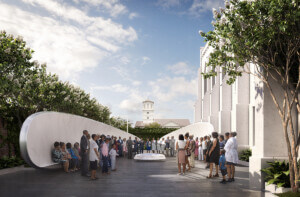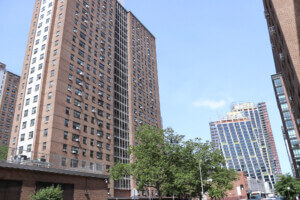Welcome back to another Monday. As we enter the dog days of summer, prepare for more heat and humidity, especially along the West Coast; temperatures hit the triple digits across much of the region this past weekend.
Here’s what you need to know:
Charlottesville’s Confederate memorials are finally pulled down
Three months after Virginia’s Supreme Court signed off on the removal of Charlottesville’s monuments to Confederate generals Robert E. Lee and Stonewall Jackson, the two statues were pulled down. This past weekend, the Lee memorial, at the heart of the deadly 2017 Unite the Right rally, and the Jackson statue, which anchors the eponymous Jackson Park, were peacefully pulled down in front of rapturous crowds. The push to take down the Lee statue first began in 2016 but had been held up by a lawsuit from local residents.
H/t to The Charlotte Observer
Footage of London Antepavilion raid raises ire
Two weeks after police raided the Antepavilion site at Columbia and Brunswick Wharf in East London and arrested the competition organizers over purported links to Extinction Rebellion, footage of the raid has been made public. In the video, over 40 officers in tactical gear can be seen cutting their way into the Hoxton Docks offices with power tools, then arresting Russell Gray, the director of Shiva Ltd (which owns the warehouses where the art organization is located) when he arrives via motorcycle. The raid was, according to police, triggered over similarities between the bamboo tensegrity structure installed at the docks and similar installations previously used by climate protest group Extinction Rebellion to picket Rupert Murdoch-owned printing presses.
H/t to Dezeen
The Sackler family is barred from adding its name to museums after Purdue Pharma settlement
As part of a $4.5 billion, nationwide lawsuit against Purdue Pharma and the Sackler family for their roles in unnecessarily pushing opioids on patients, the family has agreed to avoid adding its name to any cultural institutions for the next nine years. The Sacklers will contribute $50 million of their own money to a $4.5 billion restitution fund, but this settlement precludes any further civil lawsuits against the family. There’s a good chance that you’ve been to a museum bearing the Sackler name, although institutions have been trying to distance themselves in recent years; The Sackler Wing at the Metropolitan Museum of Art, the Sackler Elevator at the Tate Modern, the North Gallery at the Serpentine in London (the Sackler name has been removed), are just a few examples of how widely the family has cast its net.
H/t to Artnet News
Wrightwood 659 will hold a two-part exhibition on lost architectural treasures
Wrightwood 659, a private, non-commercial gallery in Chicago, will host a dual exhibition starting this fall that will shine a spotlight on two demolished masterpieces. Romanticism to Ruin: Two Lost Works of Sullivan and Wright will run from September 24 through November 27 and will focus exclusively on two buildings. The first, Louis H. Sullivan’s Garrick Theater in Chicago, one of the city’s tallest buildings when it opened in 1891 but only stood until 1961 before being demolished and replaced by a parking garage. The second is Frank Lloyd Wright’s hefty, red brick Larkin Administration Building in Buffalo; despite its grandeur and use of novel technologies like air conditioning, it only survived from 1906 to 1950 before being torn down. In Romanticism to Ruin, digital recreations, pieces and artifacts from each building, original furniture, archival photos, and more will be on display.
One of the most isolated, toxic cities in Russia is getting a new contemporary art museum
Norlisk, an isolated Russian mining city that sits inside the Arctic Circle, will be getting a new art museum in a bid to bolster tourism. It’s uncertain if the attempt will succeed; Norlisk is one of the most polluted places on Earth thanks to constant unfettered industry. Snow is stained copper red and acid rainfall is common, and in winter temperatures plunge to -40 degrees (where Celsius and Fahrenheit cross over) as the sun disappears for three months. Access to Norlisk is restricted and travelers need to apply for special permits to even visit. Still, this hasn’t stopped the Norilsk Nickel mining company from sponsoring the creation of the Arctic Museum of Modern Art, part of a broader $2 billion, citywide revitalization scheme. The museum will be built inside of a currently empty shopping center and designed by Russian architect Ilya Mukosey, with plans to open in 2025.
H/t to The Art Newspaper
Not everyone is happy with Eric Owen Moss’s Venice Beach homeless housing complex
The Eric Owen Moss-designed Reese Davidson Community was approved in June by the City of Los Angeles and is slated to bring 140 apartments for formerly homeless and low-income residents to Venice, only two blocks from the beach. While the complex’s distinctly geometric massing is what drew the most attention when it was first unveiled, Venice residents are taking aim more at the project’s actual function. Curbed’s Alissa Walker has thoroughly broken down how “not in my backyard” residents are rallying against the community, an all-too-common site in L.A.’s wealthy enclaves, as community members simultaneously fight against housing the homeless and for ordinances that would make sleeping in public, or erecting tents, illegal.
H/t to Curbed











